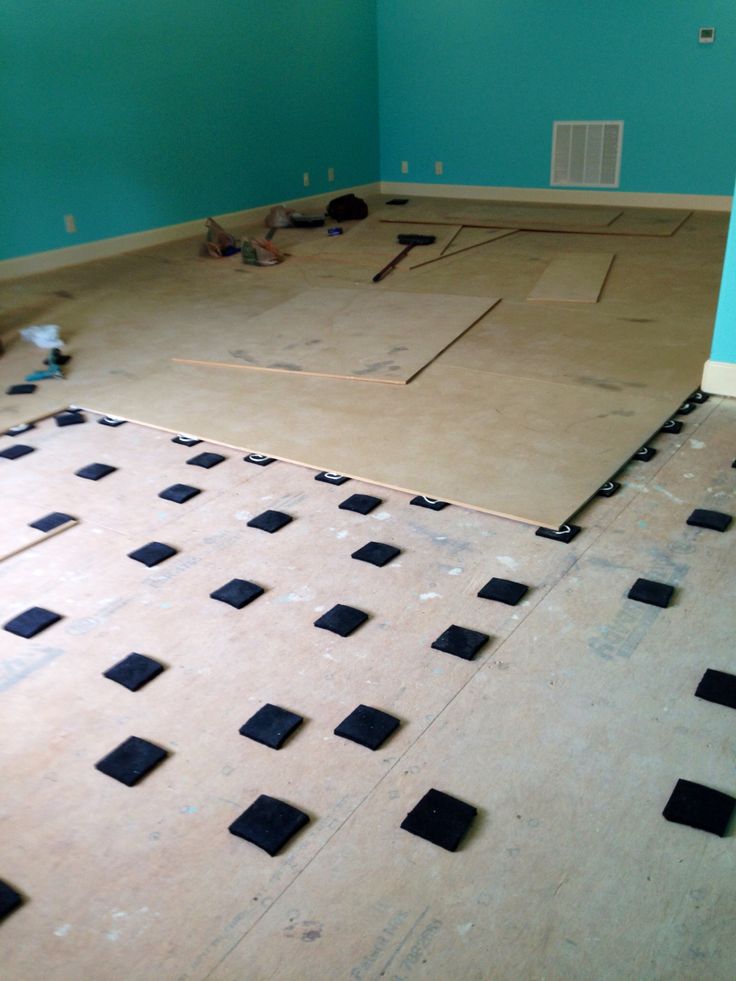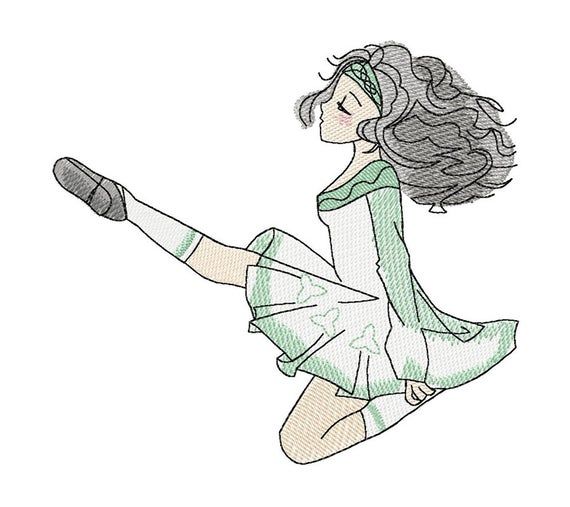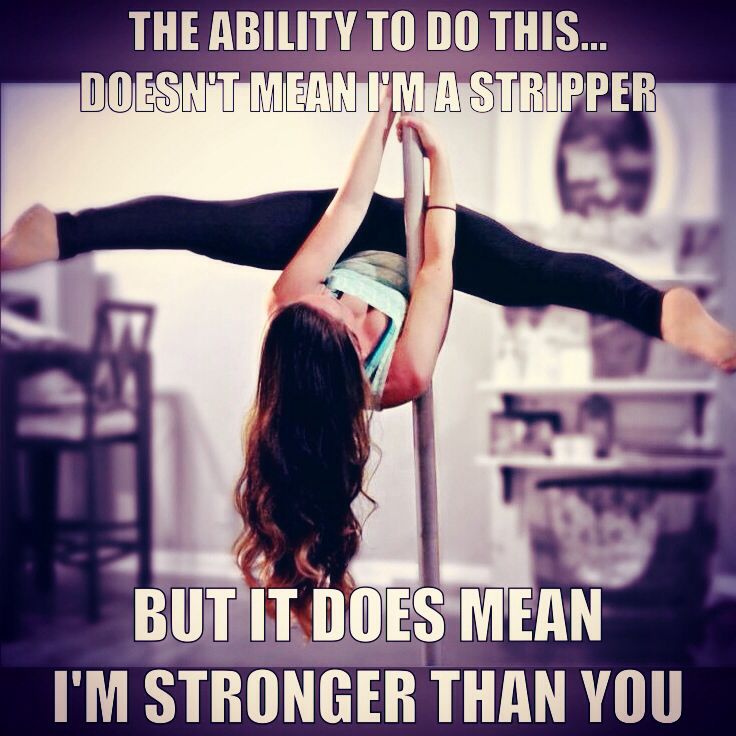How to make your cat dance
How to Get Your Cat to Dance
Some cats are natural dancers. My Zorro (the suspected Ragdoll) was born with dancing talent. He LIVES to dance and to move his feet. In fact, he’d much rather do this than eat. Food is not the motivator for Zorro — it’s human attention, tactile interaction, and the ability to speak and dance with his paws.
How do I get Zorro to dance? It’s easy. It depends on your cat, but I hope some of these tips work for you. Work with what you have. Every cat’s dance will be different. And “dancing” can mean different things when it comes to cats.
Pick a cat who loves to show off
This should be a confident cat who loves interaction and movement. Zorro is tuned into any human attention. All I have to do is look at him. He locks eyes, and he stops whatever he is doing and comes to me. Zorro has no fear of the limelight and is not afraid to seek attention.
Intense eye contact is established, and Zorro is ready to begin.Add a tilted head, and it gets more intense.Pick a cat who loves to use his or her body
I’m lucky. Not only does Zorro love attention, but he’s one of the most body-oriented cats I’ve ever known. Ragdolls are known for their love of flopping and expressing themselves through, and Zorro is no exception. I sometimes think he is trying to talk through his torso and paws. He will flop on a moment’s notice. He waves his paws continuously and loves to do high fives.
Such a cat is a perfect candidate for dancing.
The paw comes up, and now the dancing begins. Flopping might ensue, or both paws might go up at once.Choose a enticing locationIt could be said that any location is enticing for Zorro, but one thing he loves to do is sit on the very edge of a counter and reach for something. This is often where we do our “dancing.” I get Zorro right to the edge of the counter, and he loves to reach for a raised hand (a version of a high five). Let the dancing begin.
Dangle something tempting
This is the perfect place to use a toy to entice your cat to dance some more.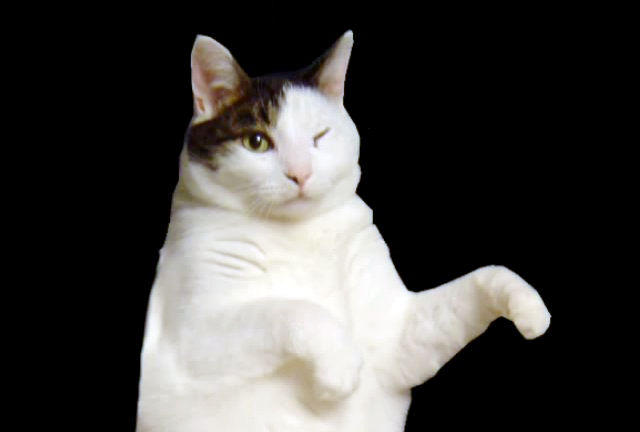 We usually use the Feline Fisher toy. For as dance-y as Zorro is, he was quite klutzy at first when learning to play with that toy. He has gotten much more coordinated and fast.
We usually use the Feline Fisher toy. For as dance-y as Zorro is, he was quite klutzy at first when learning to play with that toy. He has gotten much more coordinated and fast.
Add a song, bob around, and engage your cat
It gets silly here. Zorro is pretty easy to engage because he’s so physically inclined. But sometimes when we play with him, we add our own song and dance. I might wave my hand to the rhythm of the song, and Zorro will wave his paws in sync with my hand. We have a special song that my husband once created for Zorro, and we sometimes sing it when we play with him. We dance, too. Yes, we’re odd … and we love music.
Use the floor
Tempt your cat to jig on the floor if you don’t want him on the counter, or if he likes to move around on the floor. Use a toy, such as the Fisher or a feather toy, but do it in rhythm to some music you play. It’s great fun to move to the music and watch your cat dance.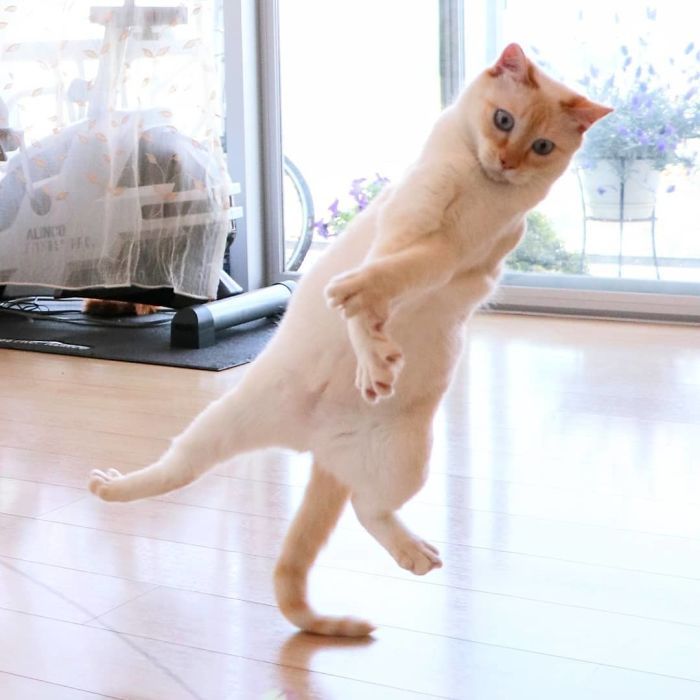
Redefine “dance”
Realize that for some cats, dancing might mean that they’re sitting on their hind legs and lifting a paw. Perhaps they’re head-butting you. Rama is one cat like this. It’s on HIS terms that he uses his body, and I’ve gotten real tuned into when he wants a head butt. I jump for that moment, to take advantage of his (temporary) trusting and generous mood.
Dance with your cat if he won’t dance
Guilty. I have held a cat and danced to music with him. I love this, even though I don’t think it’s every cat’s cup of tea. If you love to dance, what could be better than gliding around a room, cat in arms? Call me weird — I LOVE this.
Zorro lives to communicate through his body — flopping is part of that.Maybe let your cat watch
you danceIf your cat is absolutely not interested in being tempted to dance (or being held to dance), you might have to dance by yourself and let your cat watch. This is still fun … and sometimes the cats do seem to enjoy it. There are those humans, being crazy again.
There are those humans, being crazy again.
Does your cat love to dance? Howdo you encourage it or participate?
Cat & Pet » Blog Archive How to teach cat to dance stand up walking turning or spinning?| Cat & Pet
February 21, 2017
Train your cat to danceAs we have seen in the previous articles in this section, some of cats’ behaviours need training to make their nature fits better the domestic life. Sometimes, however, cats have the potential to turn their usual exercise to some entertainment to amuse us when we think only human can do. Dancing is one of them! In the following, we are going to see how cats’ artistic and entertaining potential can be realized through training.
Before we go on, we have to be prepared that we need some patience and time to train cats to dance because cats dance is itself a little tricky activity for cats, and cats are generally more difficult to condition than dogs. If we think that all is for fun and for the stronger bond between us and the cats, our patience and time will have its surprising reward.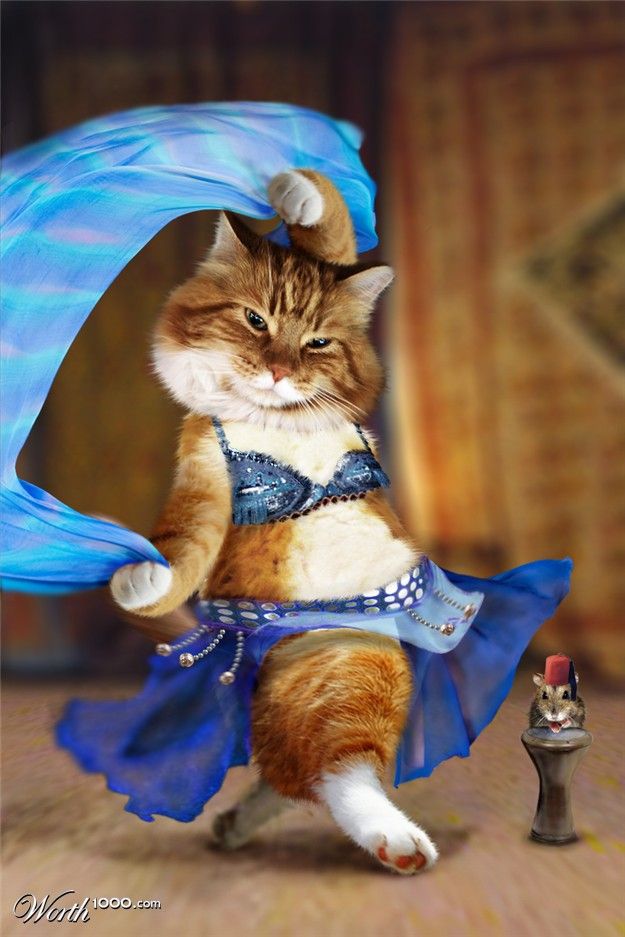
Another thing we need to bear in mind is that cats’ food is a very good incentive and motivator for cats to follow our moves and learn to dance. If you think you guess the reason behind, read on and you will find more.
Now, if you’re ready, let us go!
Bipedal Position – Bipedal position is a basic position in dancing. How can we get the cats to stand with two legs? The answer is cats’ food. There is perhaps no better way to motivate cats to stand on their back legs unless we hold some cat treat above them, around three to five inches above their heads, for instance. As expected, the cats will try to pick the food from us by batting our hands. What we will do is to keep dangling the food to keep the cats standing and, if possible, even walking.
Especially at the starting stage, we try to keep the cats to stand on two back legs as long as they can hold. We can say “stand” with our cats’ food dangling high when the cats stand still with the front legs trying to catch the food. It is understandable for the cats to reach their limit and fall down a while they “stand up” with two legs.
It is understandable for the cats to reach their limit and fall down a while they “stand up” with two legs.
When they fall, we can praise them with such simple phrases as “good cat”, “good boy”, or “good girl”, and give them the food as rewards and gently batting their head. They would sense the warm and enjoyment.
Once we find the cats start to stand quite steadily and hold for quite some time, we can go on to the next level by moving our hands to the left or to the right for the cats to follow. We may want to add the words “right” or “left” to our actions for the cats to be familiar with the act, but it is optional. At first they may need to learn to balance and fall down before they “stand up” again, but once they master this action, the move can be very appealing and interesting.
Just do not forget one thing: reward them with the food and praise them once they make a move successfully. This encourages them to repeat the move and make it stronger.
A harder bipedal movement is spinning.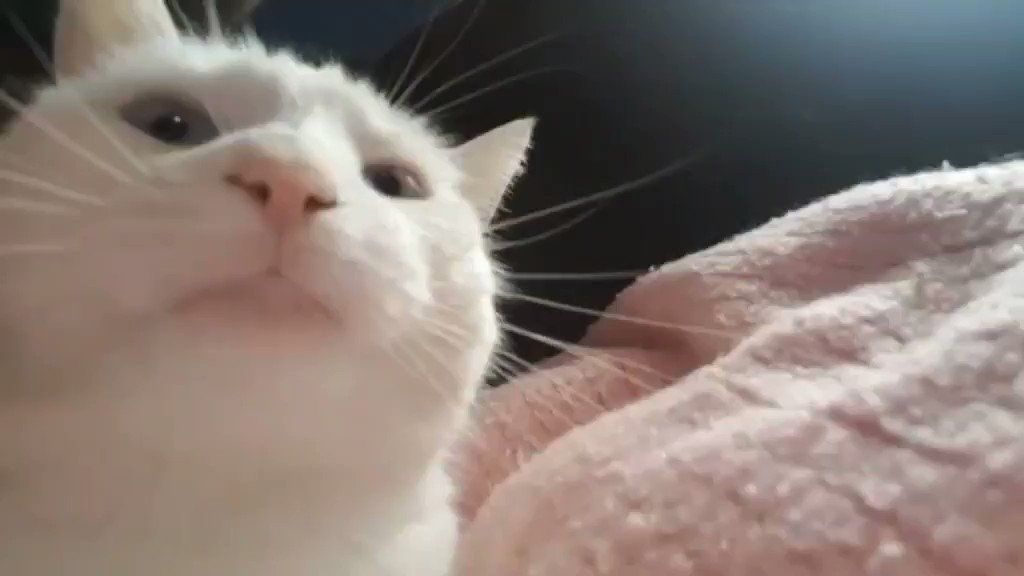 We can do this by twirling the food in the air above them. They will follow by spinning their bodies and try to get the food. They may be “tired” quickly and fall down before they jump again and keep spinning. After a few falls, we can praise them and reward them with the food.
We can do this by twirling the food in the air above them. They will follow by spinning their bodies and try to get the food. They may be “tired” quickly and fall down before they jump again and keep spinning. After a few falls, we can praise them and reward them with the food.
We should note, however, that we should neither make them move too much or treat them too much food. Moving too much would wear them out, and treating them too much food would make them undesirably fat. We want neither case to happen.
Whether it is standing, walking, turning or spinning, try this more and the cats will gradually be used to our words and stand longer and longer. But always remember. It takes time. It is easier to be said than done. But it is possible.
After all, we are simply playing with the cats. That is the core of the matter. It does not matter if the cats learn it correctly or master the positions perfectly. We are not training the cats to make performance or to compete or to show off. We are just having fun in the process, and by doing so, we are already enjoying the quality time with them.
We are just having fun in the process, and by doing so, we are already enjoying the quality time with them.
As mentioned in “Train your cat for normal daily habits“, if we find our cats too active at night, perhaps we can consider this as a day-time activity for them, as well as for us.
Share
How to teach a cat to dance - Around the cat
Sometimes, in order for pets to fit our lifestyle, we have to do special training with a cat. The most ordinary exercise can be turned into entertainment. Like dancing! With the help of dance movements, you can realize the potential of your pet. It will delight and entertain both of you.
It will take patience and time to teach your cat this, because dancing is a rather difficult activity for our little brothers. Treat this process lightly and without stress, because you are doing this in order to have fun and communicate with the animal. By the way, dogs are easier to cope with this task than cats. nine0003
nine0003
Consider that the most effective and natural stimulus for cats is food. A tasty treat perfectly motivates the animal to memorize a particular movement.
So, if you have the desire and all of the above, you can start!
Many people try to teach a cat how to dance like a human, so the animal will have to walk on two legs. How to make a cat stand on its hind legs? An edible treat will help with this, which will need to be held a few centimeters above the pet's head. The cat will reach for food, try to take it away with the help of its front paws. Meanwhile, you slowly raise your hand with food even higher, and now the cat is standing in full growth. After several attempts, the cat will walk several steps in this position for the treat. nine0003
When the pet has taken the desired position and is ready to stretch out, do not rush to give food. After a while, the cat will abruptly drop to all fours due to fatigue and frustration. And then be sure to give the animal a treat, praise with words and stroke.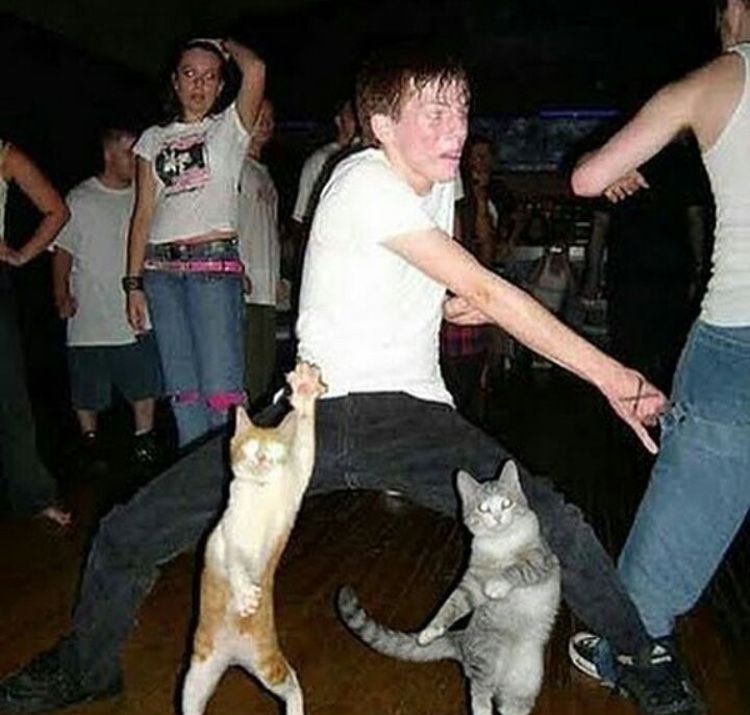 By doing so, you encourage your cat and motivate her to stand longer.
By doing so, you encourage your cat and motivate her to stand longer.
If your pet is already deftly standing on its hind legs and stays in this position for a long time, you can proceed to the next step. When you raise your hand with a treat, move it to the right and left. In this case, you can say the words "right" or "left", but this is not at all necessary. It will take more time than in the previous stage, but the cat will improve coordination and sense of balance. Don't forget to reward your pet! As a result, you can achieve a funny swaying, which already looks like a dance. nine0003
If you want something more difficult, you can master the rotation. Start circular motions with your hand with a treat over a standing cat. Depending on these movements, the cat will be funny spinning at the speed you need. However, this pet quickly gets tired, so do not overdo it.
Do not push the animal with too much training. Firstly, the cat is very tired physically, you can overwork it and provoke the development of a disease of the musculoskeletal system.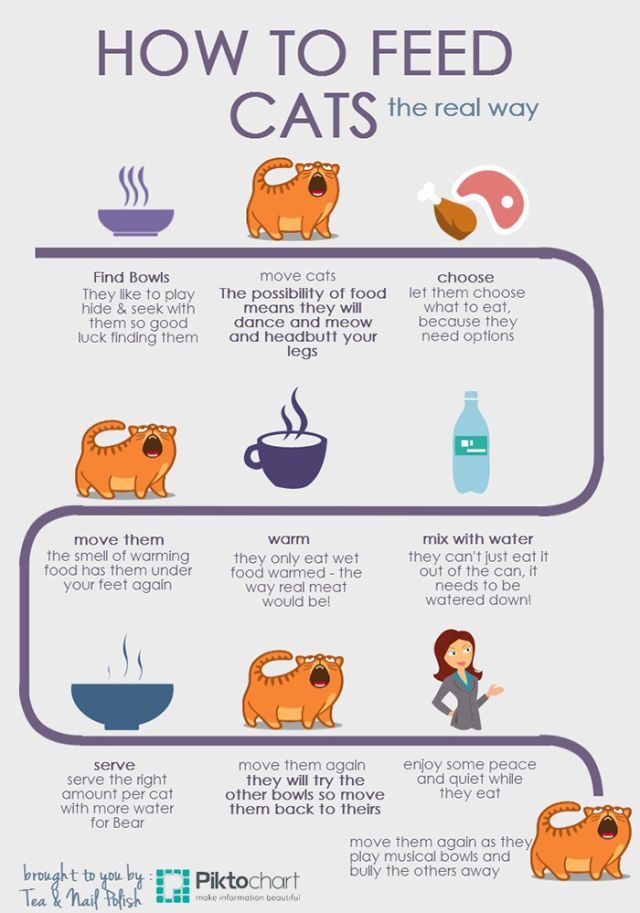 Secondly, too frequent "rewards" in the form of tasty treats can cause obesity. nine0003
Secondly, too frequent "rewards" in the form of tasty treats can cause obesity. nine0003
Now you have mastered the basic positions for dancing with your pet. Have fun, experiment, be creative and have fun!
7 Commands You Can Teach Your Whiskered Pet
“Mood is no joke,” cat breeders say. - When your pet is in the mood to play, at such moments you can teach him to bring a ball, a bow, some other small toys, or learn the “jump through the hoop” trick. But you must understand that it will take much more time to train a cat than to teach the same commands to dogs. And not because some are smarter, while others are not. Cats are wayward, and if at some point your pussy becomes lethargic, sleepy, or just not in the mood, then you will not force any commands to follow (or learn them). nine0003
7 simple cat commands
There is a standard set of commands that almost any cat can learn.
Give a paw
Put a treat on your palm, bring it to the mustachioed pet and wait for the kitty to put its paw on your hand, as if asking for a treat. If she won't reach for the treat, show her what needs to be done, then praise her, let her eat a treat and stroke her. The next time your mustachioed friend starts to raise his paw at the sight of a treat in his palm, say the command "give paw." Repeat this 5-7 times, then take a break. nine0003
If she won't reach for the treat, show her what needs to be done, then praise her, let her eat a treat and stroke her. The next time your mustachioed friend starts to raise his paw at the sight of a treat in his palm, say the command "give paw." Repeat this 5-7 times, then take a break. nine0003
Sit
When the cat is circling around you, press gently on the croup and the moment it starts to sit, give the command "sit". After you make a request, you can snap two fingers to get the animal's attention. Dog breeders at this moment raise their index finger. The click must be played after each command so that the cat reacts to it.
You can teach your kitty this exercise not only by pressing on the croup, but also by repeating the command along with the click when your furry friend sits next to him. nine0003
Crawl
The command must be learned when the kitty is lying down. With one hand, start stroking the fluffy, gently pressing on his back, not letting him get up.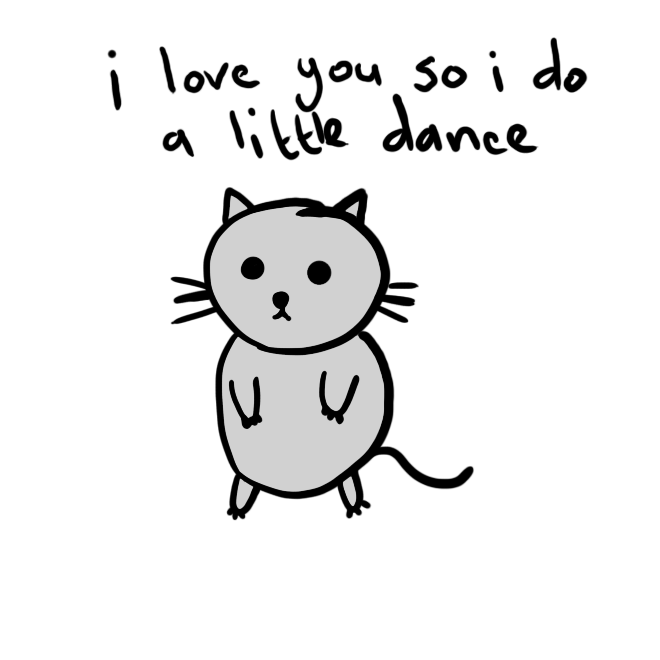 With the other hand, hold the yummy, gradually moving it away from the muzzle to the side. The cat, unable to stand up, will reach forward for the treat, pulling itself up on its claws.
With the other hand, hold the yummy, gradually moving it away from the muzzle to the side. The cat, unable to stand up, will reach forward for the treat, pulling itself up on its claws.
Bring
You can teach this command to a cat if she is playful herself and likes to wear some things and toys. The next time you throw a ball, a bow or a mouse to your kitty (it can be on a string to pull it a little towards you) and she brings it to you, give her a treat for this. If it drops on the way, don't give anything. Repeat the exercise several times in a row, accompanying the throw with the sound of the command. Do not spend more than 3 - 5 minutes on the exercise, otherwise the kitty will quickly get tired of it. Give treats only when your pet does everything right. And don't expect quick results. nine0003
Come to me!
First, figure out how you will call your mustachioed pet to you. It can be "kiss-kiss" or some other expression. For the first time, beckon your cat to you by picking up her favorite toy or treat. Pet treats should be lured before eating, 15 minutes before feeding, when the cat is already hungry. As soon as she approaches you, reward her with a treat and pet her. As soon as the animal begins to approach you from small distances, start increasing them. Repeat the exercises in different rooms two or three times a day. nine0003
It can be "kiss-kiss" or some other expression. For the first time, beckon your cat to you by picking up her favorite toy or treat. Pet treats should be lured before eating, 15 minutes before feeding, when the cat is already hungry. As soon as she approaches you, reward her with a treat and pet her. As soon as the animal begins to approach you from small distances, start increasing them. Repeat the exercises in different rooms two or three times a day. nine0003
Jump
If you have an adult cat, a small hoop will work for this exercise, if you have a kitten, you can use a large hoop. Put them in front of the kitty, and on the other hand, beckon her with a treat. As soon as the animal crosses the circle, reward it. In a few days, when the fluffy understands what they want from him, and will do everything right, start little by little, literally a couple of centimeters, to raise the hoop so that the kitten makes a jump. Accompany the exercise with the “up” or “jump” command. nine0003
Voice
Practice this command before eating, teasing the kitty with treats. Take a yummy, bring it to the muzzle so that the pet can smell it, and lift it higher. Wait until the mustachioed friend starts making different sounds, demanding food. When you hear a distinct "meow", let him gobble up a treat.
Parenting Tips
It is easier to train a kitten than an adult cat. In the second case, you just need more time.
Suitable age for training a kitten is 6-8 months. nine0003
You need to train your pet 1-3 times a day, no more. Each approach should not take more than 5 minutes.
If the cat does not respond to commands, do not force or scold. Take a break and start over after a while.
For treats, choose treats that are different from your pet's normal diet. If feeding dry food, give wet food and vice versa. Kitty must want to eat this yummy.
When training cats, treats should be given at the moment when the kitty has completed the exercise. The treat should be ready by now. If you hesitate and treat your pet after a minute, the animal will not understand that he was given a treat for the trick he performed.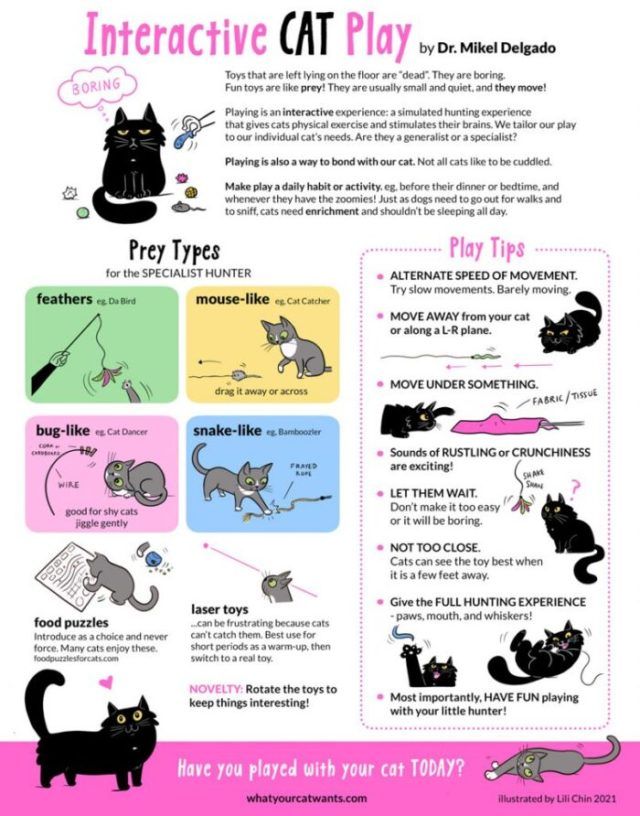 nine0003
nine0003
Training should be done before the main meal.
In addition to treats, do not forget to stroke the animal, scratch behind the ear and praise it.
After your cat learns to quickly execute a particular command, start weaning the animal from treats. Give treats not for every trick, but for 2-3 performed in a row. Then, instead of a treat, you can simply stroke and praise the pet.
Popular questions and answers
We talked about how to teach a cat commands with veterinarian Anastasia Kalinina and zoopsychologist, cat behavior correction specialist Nadezhda Samokhina.
Which cat breeds are best trained?
– All breeds can be trained to some extent. The main thing is to find an approach, - says Nadezhda Samokhina. - But it is believed that Bengal, Abyssinian, Somali cats, Chausie, Orientals, Maine Coons are best trained.
- And also active sociable cats, for example, Siamese, Kuril Bobtail, Rex, Sphynx, Siberian and common outbred, - says Anastasia Kalinina.



